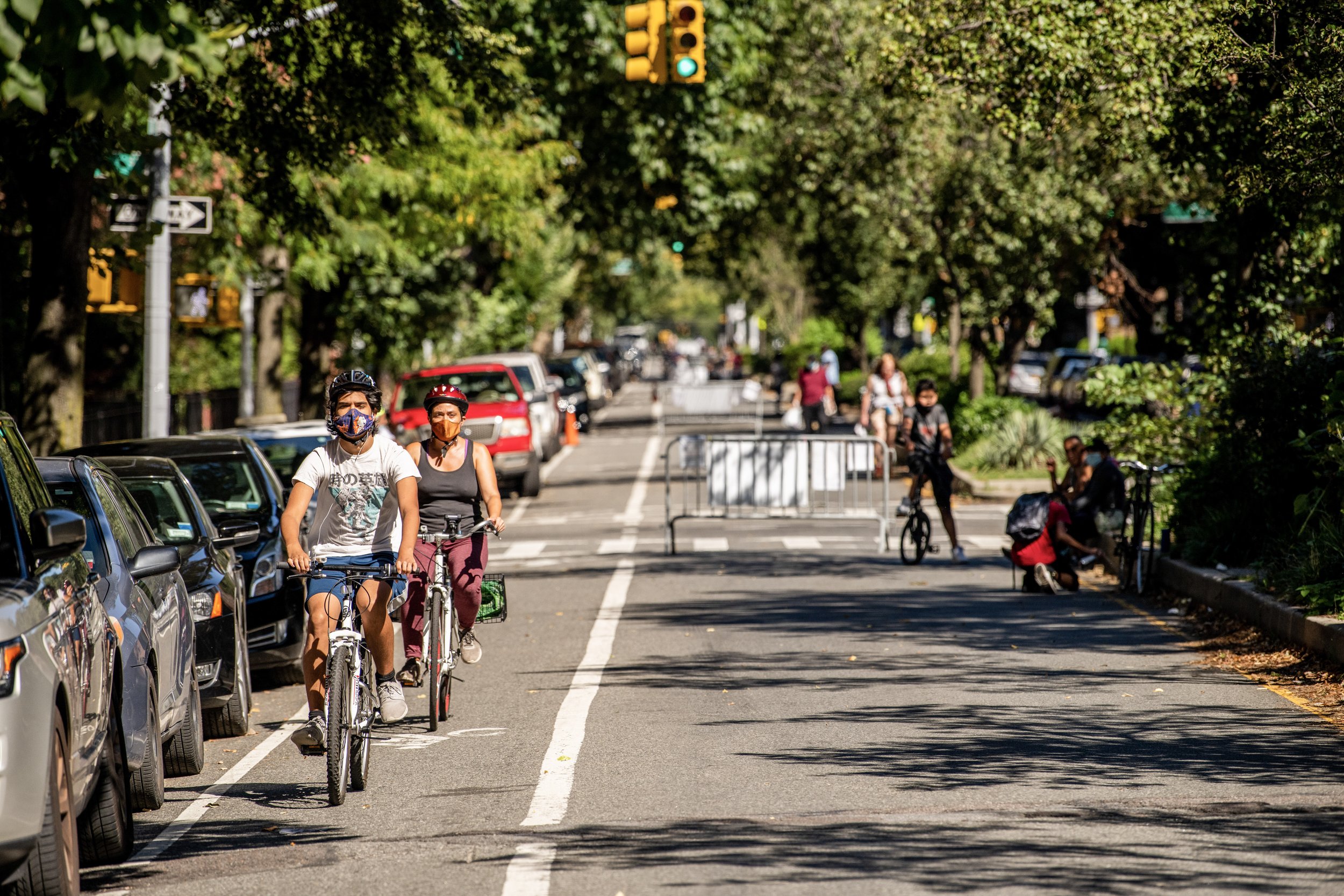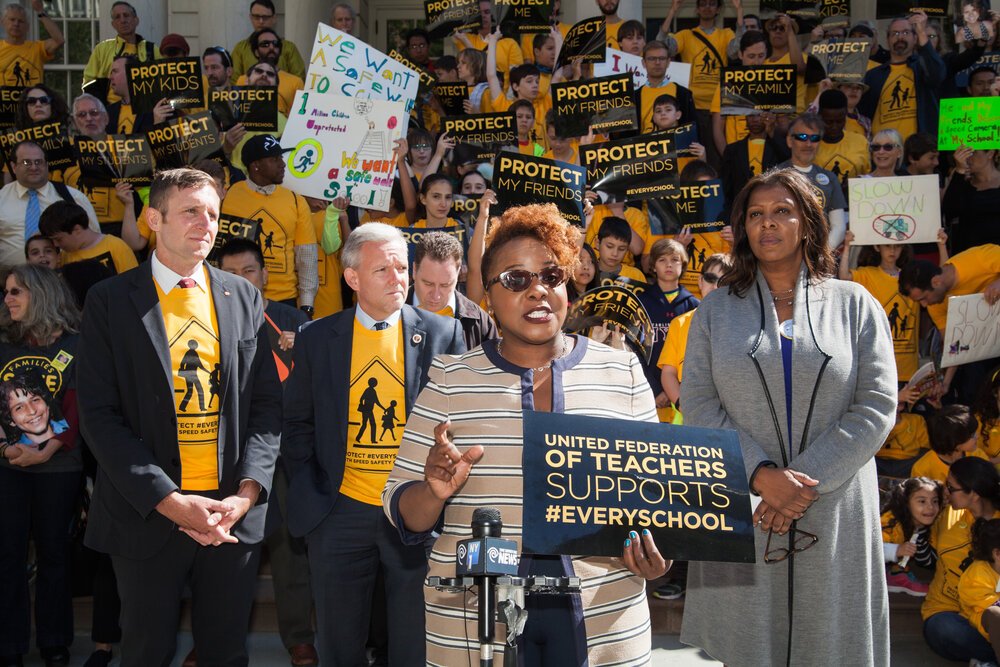
Our Story
For 50 years, Transportation Alternatives has led the movement for safe, equitable streets in New York City. TA uses a combination of neighborhood-level grassroots organizing and citywide advocacy to push for changes in public policy, street design, enforcement, and resource allocation that transform our city’s streets for the better.
Founded with a Mission to Reclaim our Streets
In 1972, a few hundred New Yorkers, led by a city planner named David Gurin, gathered in Central Park with their bicycles. The group called themselves Action Against Automobiles — yes, AAA. Under that moniker, the group rode downtown from Central Park to Washington Square with a stop outside the Auto Show at the New York Coliseum to protest highway funding and to demand that cars be barred from lower Manhattan. A year later, those New Yorkers would repeat their protest, this time under a new, more official name.
In 1973, with a grant from the Kaplan Fund, Transportation Alternatives (TA) was born.
A Ride and Rally for a New York Bike Lane Network
On April 8, 1973, TA hosted its first-ever event. Red Grooms illustrated the flyer and The New York Times came to cover the protest.
The ride ended in Washington Square Park, where Pete Seeger played the rally. The protest, David Gurin said at the time, was born of his estimation that one-third of the city's land area was reserved for truck and car traffic or storage.
“This represents a reversal of realistic priorities,” he told the Times.
“About 400 fresh-air enthusiasts bicycled through the perfect spring afternoon in Manhattan yesterday to dramatize their demand for a separate bike lane on city streets,” the Times reported.
Building the Movement for Safe Streets Across New York City
Once radical ideas have become reality because of TA activists.
For decades, we were told a car-free Central and Prospect Parks would never happen. Until we made it happen.
We were told we would never be able to protect New York City’s school children with lifesaving speed safety cameras. Until we made it happen.
We were told a Queens Boulevard redesign would never happen. Same with a public bike share program. Same with a bike lane across the Brooklyn Bridge.
Until we made it happen.
Turning Pain Into Purpose: Families for Safe Streets Is Founded
Families for Safe Streets is a coalition of people injured in traffic crashes and the children, spouses, siblings, and parents whose loved ones have been killed.
What began in 2014 as a small group of families in mourning has grown to a citywide force for change, and a national inspiration, with chapter organizations in nearly 20 cities. Together, this powerful group of survivors tell their stories as an unignorable testament to the need for safe streets and refuse to give an inch in defense of the status quo.
A Challenge to New York City’s Leaders
In 2021, Transportation Alternatives launched NYC 25x25, as a challenge to New York City’s leaders to give streets back to people. The report and accompanying campaign proposed a radical reimagining of how public space is allocated and used in New York City.
We support NYC 25x25 with our Spatial Equity NYC project, which provides proof of the widespread and deeply inequitable harms created by devoting so much of New York City’s finite public space to car traffic.
Redefining What Our Streets Can Be
When Transportation Alternatives printed its first stack of leaflets 50 years ago, bicycling was an act of defiance in a country focused on expanding interstates. Cities all over America were paving highways through historic neighborhoods under the banner of “urban renewal.” In New York, Robert Moses' vision of a city of highways still represented the pinnacle of urban planning. The reigning idea of progress consisted of adding another lane to the highway at the expense of New York City’s communities.
From that car-centric idea, the paradigm shift that TA has achieved is remarkable both in the scope of physical changes and in public perception. Yet the legacy of Robert Moses still carves gouges through our city, and we continue to fight to take the city back from cars and give New York City’s public space back to people.
With grassroots community organizers on the ground in five boroughs, we run 20+ simultaneous, hyper-local activist campaigns for new bike lanes and other safe street redesigns. At the same time, we push New York to be a national leader in transportation innovation, trying out bold new ideas here which are replicated across America. This model — combining grassroots organizing with national thought leadership — has begun to transform New York City streets for the 21st century.






